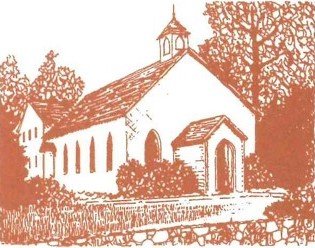Mt. Lebanon’s Nature Walk
Bigleaf Hydrangea
Cherry Laurel (Otto Lukyen): An evergreen species of cherry; small tree with glossy, dark green leaves with a leathery texture. Symbolism: love, divination, memorial
Bigflower Tellima: Evergreen perennial that typically grows in forests along riverbeds from CA to BCFun fact: in legends, woodland elves feast on this plant to improve their vision
Japanese Sedge (Everest)” A very distinctive ornamental grass with narrow creamy-yellow leaves. Provides a lovely contrast with other plants.
American Holly
Wax Begonia: Native of South America; can be red, pink, or white. Symbolism: caution, gratitude
Cannalily: A perennial with large and colorful flowers; generally found growing. Symbolism: appreciation, admiration, charm
Catmint
Little Joe Pye
Little Joe Pye (Eutrochium): Can grow as tall as 12ft; attractive to butterflies, bees, and other insects; a member of the sunflower family
Witch Hazel Diane: Quite commonly used in the 20th century for locating water sources; the belief is that when a water source is directly under the stick, it will dip or jump. Symbolism: protection, inspiration
Salvia (Caradonna): A clump-forming plant known for its purple flowers that grow upright; leaves give off a minty fragrance. Symbolism: family happiness and values
Hubricht’s bluestar (Amsonia hubrichtii): Named after biologist, Leslie Hubricht who was the first person to encounter the plant in the 40s; complements autumn perennials. Symbolism: endurance, strength, determination
Little Bluestem (Schizachyrium): Grows in many environments except for deserts; its spring/summer blue-green appearance gives it the common name “little bluestem.” Fun fact: can be used to attract wild birds
Green Mountain Boxwood (Buxus): With bright green foliage, retains good color throughout winter; a good candidate for topiary forms
Pink Saucer Magnolia
Spotted Laurel (Aucuba): Native to Japan and Korea where it grows along streams and in moist woodland areas and thickets. Symbolism: purity, rebirth
Nandina (Nandina domestica): Sometimes referred to as heavenly bamboo, but it is actually a semi-evergreen shrub. The bright red berries are its’ most distinguishable feature. Symbolism: good luck
Bigleaf hydrangea (hydrangea macrophylla): A deciduous shrub native to Japan, known for its lush, oval, colorful inflorescence. Depending on the soil’s pH, blooms can change from pink to blue. Symbolism: gratitude for understanding, strong emotions
Lilyturf (liriope): Comparable to grape hyacinths, low maintenance and excellent for ground cover Symbolism: joyfulness, intelligence
Lenten Rose
Lenten Rose (Hellebores): Cultivated since the 1800s; bloom only once a year hence the name “Lenten” Symbolism: serenity, tranquility peace
Siberian bugloss (Brunnera): Flowering native plant; also known as the “forget-me-not” Symbolism: wisdom, logic
Astilbe (Vision in Pink): Long-lasting, graceful flower plumes; perfect perennial for a shady border with dappled light.
Southern India Azalea (Rhododendron): A bushy, sprawling Japanese native semi-evergreen shrub; ideal for decoration. Symbolism: family, elegance
Pin Oak (Quercus): A deciduous tree native to North America; leaves change to a beautiful bronze color in Autumn. Symbolism: protection, strength
American Holly (Ilex): A medium-sized evergreen tree, found in southeastern areas of North America as understory tree in humid forests. Symbolism: protection, luck
Cannalily
Abelia “Edward Goucher”: Evergreen in the south but generally deciduous in the St. Louis area due to the cold winters; blooms on new wood after pruning in late winter, early spring
Japanese Sedge: A very distinctive ornamental grass with narrow creamy-yellow leaves. Provides a lovely contrast with other plants.
Viburnum Prague: Beautiful evergreen shrub with dark green, puckered leaves; pink buds develop in early spring and open to lightly fragrant, creamy white flowers
Catmint (Nepeta): A herbaceous perennial plant; also known as catnip and known for its behavioral effect on cats. Symbolism: love, happiness, fertility
Japanese Maple (Acer): Features hand-shaped leaves with five pointed lobes; extracts from the branches and leaves are used as medicine in Chinese traditional medicine. Symbolism: peace, harmony, beauty
Japanese Holly (Ilex): A flowering plant; its flowers transition into berries during the summer; can be grown as a Bonsai tree. Symbolism: protection, luck
Siberian Iris: Tall and graceful with slim, grassy foliage. Fun fact: these irises don’t actually grow in Siberia!
Firelight Hydrangea: Florets which transform from pure white in summer to rich pomegranate-pink in late summer to fall.
Allspice (Calycanthus): The flowers have a banana-strawberry scent and the leaves, when crushed, have a pleasant aroma, as well; can be used to make potpourris. Symbolism: benevolence
Boxwood (Buxus): A hardy shrub that grows up to 2ft tall and 3ft wide; grows best in the shade and survives colder climates. Symbolism: young, energetic
Osmanthus (Goshiki): Goshiki translates to “five colors”; new leaves emerge read and quickly turn green, with spots of white, gray-green and yellow-green
Arctic Fire Red Twig Dogwood: Dark red stems that provide a spectacular show in the winter sunlight; grows to about 4-5ft tall; makes a great addition to holiday arrangements. Symbolism: wishes, charm, strength
Osmanthus
Common winterberry (ilex verticillate): Valued for its ability to grow in temperate climates and the colors it provides as an ornamental plant. Symbolism: protection, luck
Miss Molly Butterfly Bush: Pushes the color spectrum with blooms boasting rich hues of dark Sangria-red; attracts butterflies and hummingbirds
False Indigo (Baptisia australis): Encountered in the North Carolina Botanical Garden, hence it’s nickname “Purple Smoke”
Azalea: Comes in many different shapes, sizes, and colors-some evergreen and some deciduous
Pink Saucer Magnolia: Goblet-shaped can be white, pink, purple or red-purple; a cross between two different magnolias and creates an impressive scene in the garden
Little Bluestem (Schizachyrium): Grows in many environments except for deserts; its spring/summer blue-green appearance gives it the common name “little bluestem.” Fun fact: can be used to attract wild birds
Penstemon: High-impact, long-blooming perennial with low water requirements and amazing diversity
Japanese Sedge: A very distinctive ornamental grass with narrow creamy-yellow leaves. Provides a lovely contrast with other plants.








